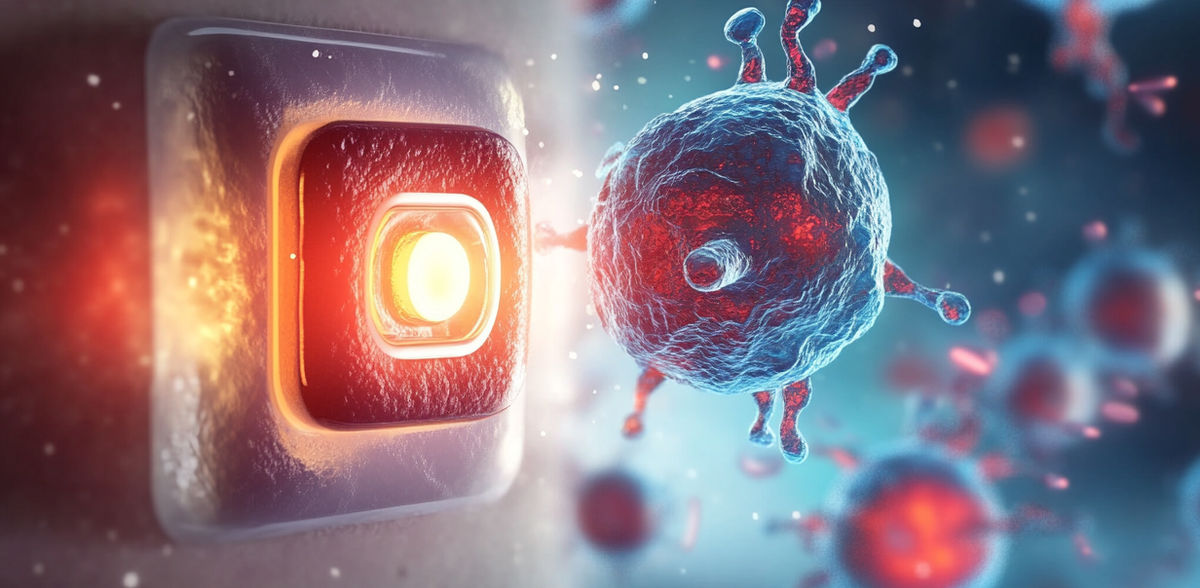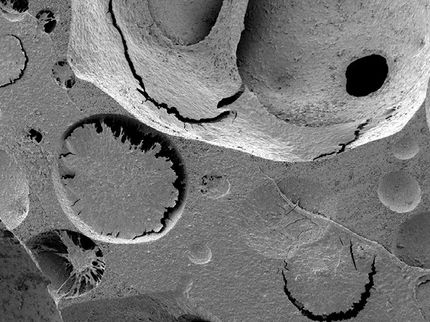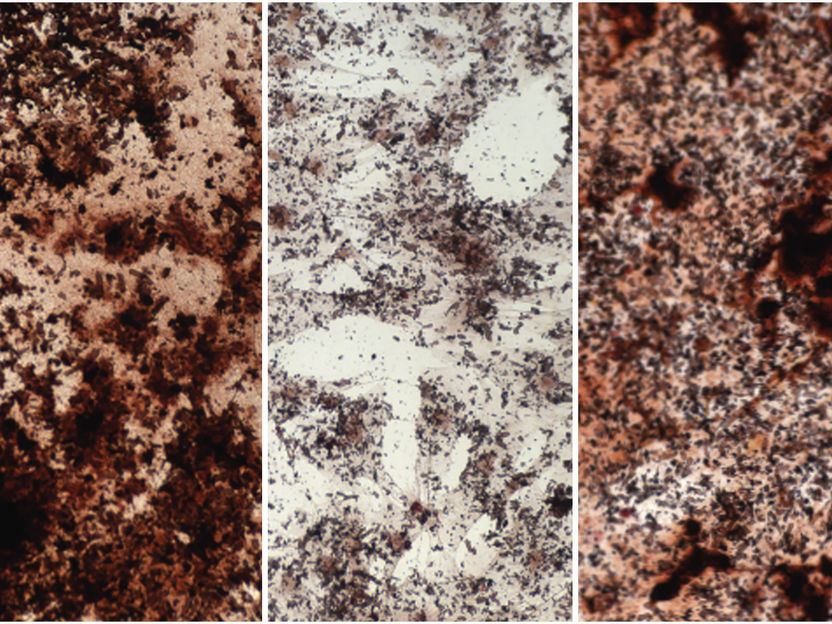Light switch for special receptors
IMC Krems plays a leading role in the establishment of innovative cell-based test systems for the identification of biomarkers.
A research project led by the IMC University of Applied Sciences Krems has just been successfully completed and now provides an excellent basis for further projects: Prof. Christoph Wiesner's team from the Institute of Biotechnology succeeded in genetically modifying special receptors (toll-like receptors, TLRs) on stem cells so that they can be activated by blue light. By using such "optogenetic" techniques, biological signaling pathways in cells could be precisely controlled, validated under physiologically relevant conditions and disease models generated. These new optogenetic cell lines will also make a valuable contribution to the understanding of disease mechanisms and the development of innovative, targeted therapeutic approaches.
For several years, the group led by Christoph Wiesner, holder of the "Cellomics / High Content Screening" research professorship at IMC Krems, has been focusing on optogenetics - an emerging field of research that deals with the targeted control of cells by light. The aim of the project, which has now been successfully completed and funded by the Austrian Research Promotion Agency (FFG), was to develop new stem cell lines (MSCs, mesenchymal stromal cells) whose receptors have been genetically modified by incorporating light-sensitive proteins so that they can be activated by blue light.
MSCs are multi-talented
"In our project," explains Prof. Wiesner, "we worked with so-called MSCs, or mesenchymal stromal cells. These are adult stem cells that occur in various tissues and can differentiate into different cell types. MSCs are present in the body in two different states (MSC1 and MSC2), which differ in their functions: MSC1 cells have a pro-inflammatory effect, i.e. they promote inflammatory reactions and thus support the immune system in defending against infections and fighting tumors. The anti-inflammatory MSC2 cells, on the other hand, dampen inflammatory reactions in the body and are therefore useful in chronic inflammation, autoimmune diseases or to promote tissue repair after injuries. It is known that all MSCs carry special receptors on their cell surface - "Toll-like receptors, TLRs" - which recognize their molecular pattern upon contact with pathogens and trigger an immune response via subsequent signalling pathways. However, the exact mechanisms that lead to the expression of the two forms of MSCs via the activation of different TLRs are still poorly understood - a fact that Prof. Wiesner's research team has addressed.
A question of control
Based on the hypothesis that MSCs can take on different functions depending on the activated TLR type and the strength of the stimulus (e.g. pro- and anti-inflammatory, antibacterial or regenerative tasks), transgenic and optogenetic approaches should help to elucidate the mechanisms that lead to the polarization of MSCs into the two forms MSC1 and MSC2. "To this end, we incorporated light-sensitive proteins into the TLRs so that we could switch the receptors on by light and off again by darkness," explains Prof. Wiesner. Specifically, it was shown that TLR4 and TLR10 can be easily controlled by light after incorporation into the cell lines. The following observations proved that the optogenetic constructs functioned perfectly: Activation of TLR4 led to the production of pro-inflammatory molecules, similar to bacterial infection, while activation of TLR10 regulated both pro-inflammatory and anti-inflammatory molecules. In extensive analyses, numerous proteins were found in the supernatant of the cultured MSC cell lines that show the regenerative potential of the cells and accelerated bone cell formation after activation of TLR10. This makes the new cell lines useful tools for investigating the mechanisms of TLR4 and TLR10 activation and could provide new approaches for therapeutic strategies.
Stem cells in "series production"
The ESPRIT project with Anna Stierschneider, senior postdoc in Christoph Wiesner's research group, which emerged from this project, shows that the new optogenetic cell lines can be tested not only in individual experiments, in which miniaturized (0.2-0.5 mm in size), physiologically relevant heterotypic 3D cell models are established in vitro. The optogenetic stem cells are integrated into heterotypic tumor cells (colorectal adenocarcinoma), 96 of these miniaturized tumors are cultivated in parallel and the optogenetic approach is tested for its anticarcinogenic potential. Initial experiments are promising.
Note: This article has been translated using a computer system without human intervention. LUMITOS offers these automatic translations to present a wider range of current news. Since this article has been translated with automatic translation, it is possible that it contains errors in vocabulary, syntax or grammar. The original article in German can be found here.
























































